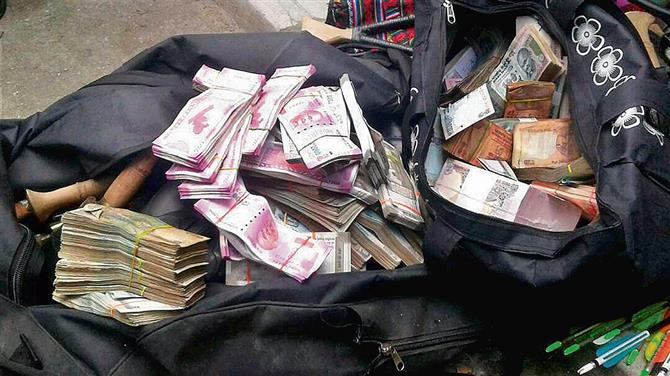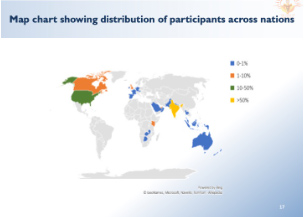
Indian democracy runs on the proceeds of corruption
“Why does dirty political funding enter the picture while discussing subjects such as corporate governance and lending decisions of banks? Both take place far removed from the mire that is politics as practiced in India, where the wholesale price of legislators rises faster than the summer price of tomatoes, distinct from politics as described in classrooms.
This is because most Indians do not contribute a paisa to support any political party. They think their contribution to democracy is made when they vote, forward WhatsApp messages and feel proud to be a part of the world’s largest democracy. This leaves political parties to mobilize their funding from moneybags with the capacity to contribute in cash.”
Political funding remains unreformed in India. This makes all capitalists crony, to a lesser or greater degree. It also makes corruption in India systemic, rather than opportunistic as in most other parts of the world. Indian democracy runs on the proceeds of corruption.

It might seem a stretch to argue that corporate governance and bank asset quality depend on cleaning up India’s political funding. But it is not. It is simply the cold, hard truth. And since that reform is yet to happen, all talk of a robust financial sector and SEBI’s incremental success in reforming corporate governance is as hollow as the claim that India, long driven by caste hierarchy and grossly unequal distribution of social and cultural power, has democracy in its DNA.
Why does dirty political funding enter the picture while discussing subjects such as corporate governance and lending decisions of banks? Both take place far removed from the mire that is politics as practiced in India, where the wholesale price of legislators rises faster than the summer price of tomatoes, distinct from politics as described in classrooms.
This is because most Indians do not contribute a paisa to support any political party. They think their contribution to democracy is made when they vote, forward WhatsApp messages and feel proud to be a part of the world’s largest democracy. This leaves political parties to mobilize their funding from moneybags with the capacity to contribute in cash.
Why talk about cash in these times of electoral bonds, you might ask. This is because politics is dirty in practice and that calls for payment in cash. If everyone, say nine candidates in a constituency, distributes booze to voters during elections, some even handing out wads of currency notes, can this expenditure be sourced from chaste donations entered into the party’s books, whether received by cheque or electoral bonds? If every MLA is paid, say Rs 20 crore, for crossing over to support the leader he or she had railed against during the election campaign, and you need to buy a couple of dozen MLAs, and repeat this operation in multiple states, that adds up to a tidy sum. Imagine an expenditure item in the party’s accounts submitted to the Election Commission, which says ‘Annual expenditure on buying Opposition MLAs’ with a footnote pointing to an annexure that gives details. Well, that money has to come from unaccounted sources.
The fee paid to worshipful supporters who attend mammoth rallies of mass leaders varies from state to state. In prosperous states, it could be upward of Rs 1,500 per precious capita. Catch a party admitting that it paid to mobilize a crowd at a rally. The money has to be sourced in cash.
Who pays this cash? Mostly owners of companies, big and small. The big guys do it expecting favors in return; the small ones pay up the way they pay protection racketeers in their town. Some consider it a part of their business transactions, if the business involves executing large state-funded projects and securing the contract means agreeing to share a part of the project cost with the minister in charge of the department implementing the project.
How do companies get this unaccounted money in the first place, in this age of digital payments and wannabe Hindenburg’s sniffing around for a corporate scandal? When they raise loans from a bank for a new project, they exaggerate the project cost and secure a loan far in excess of what is actually required. The project is implemented by an assortment of companies, some of which are linked to the promoter. The money is siphoned out through these. Or else, when companies acquire other companies, the seller generously routes a part of the payment into a foreign bank account indicated by the promoter of the acquiring company. The acquiring firm, in effect, overpays.
When inflated project costs are sanctioned and larger-than-warranted loans are disbursed, the groundwork is laid for potential default. To service that excessive loan before the project for which it was secured starts generating cash, the promoter starts a series of additional projects and secures loans for each one of them, using a portion of the loan proceeds to service the original loan.
If everything goes according to plan, all projects come through and all loans are serviced. If, on the other hand, these plans are like the best laid plans of mice and men, the loans go awry and end up adding to the banks’ non-performing asset (NPA) burden.
Political funding remains unreformed in India. This makes all capitalists crony, to a lesser or greater degree. It also makes corruption in India systemic, rather than opportunistic as in most other parts of the world. Indian democracy runs on the proceeds of corruption.
The RBI’s recently released Financial Stability Report notes that gross and net NPAs have come down sharply, that the capital-to-risk-weighted asset ratio is in excess of 17 per cent, that provisioning against bad loans has risen sharply, and concludes, rather smugly, that the Indian financial system is relatively robust, with its principal threat coming from financial instability outside India.
This ignores the fact that the formal financial sector does not lend to small and medium enterprises, which obtain at the most 25 per cent of their credit requirement from the banks. The rest comes from non-banking finance companies or informal channels such as chartered accountants who look after hordes of politicians and their financiers.
Private infrastructure investment has collapsed since the pandemic because there are no lenders to private infrastructure developers. After the IL&FS, Dewan Housing and related frauds came to light, the RBI has cracked down on non-banking financial institutions (NBFCs) that lend for infrastructure projects. Now, minus infrastructure lenders, there is hardly any private infrastructure investment either. A vibrant market for corporate debt could fund infrastructure and MSMEs directly or via NBFCs that lend to these sectors. We have stunted the corporate debt market as well.
The current state of wellness of the banking system is, in other words, a passing phase. When banks start lending aggressively again, given the absence of political funding reform, systemic forces would compel the creation of bad loans.
(The author is a senior journalist)





Be the first to comment